Monday, 9 May 2011
Sunday, 8 May 2011
Friday, 6 May 2011
Feedback

Here is one of the questionnaires that was given back from a group sample of 20 people.
Wednesday, 4 May 2011
How did you attract/address your audience?
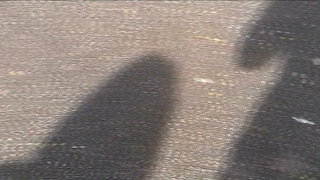
Who would be the audience for your media product?
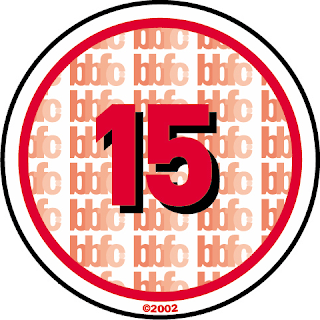
The target audience for our film would be teenagers and young adults. The genre comes under psychological thriller so would contain scenes too distressing for children and younger teens to watch. With this we have decided our film would have the rating of 15, which would allow us still to reach our target audience. At first we thought the rating should be 18, however upon review we decided that that would be too restricting to our audience, and as the film would not contain scenes overly distressing or inappropriate there would be no reason.
Shutter Island's primary reception was in the 20-30 year old age group, and we therefore set that as our target audience too, but allowing teens aswell so we can widen our audience. Shutter island also had the same age rating, 15. we decided it would be mainly males as our protagonist is male and men are typically more prone to watch films with horror and violent aspects, however we did not believe their would be a much less significant amount of interest in females. Psychological thrillers typically appeal to a more niche audience, and therefore we decided the typical nature of a would-be audience member would be to have interests and preferences to mystery, drama and violence. We would therefore advertise this on places such as TV, radio, bus stops and football stadiums.
This is an example of who might come to watch our film. Due to the fact that our main character is quite depressed and deluded and has a hint of "emo" and "goth" in his style of clothing. This would appeal to the "emo crowd" so we would aim to attract people like the teenager pictured. This is Luke, he is 18 years old and lives in Manchester. He dresses quite "emo" and gothic he would therefore shop in places like soho.com for example. He does not shop in high street shops and is not interested in whats in fashion as he has his own unique style. He would defenatly be interested in horror and thriller films and defenatly psychological thrillers - like our film. He is the type of person who likes goorey films and would certanly buy the DVD's of these types of scary films when they come out.
Luke listens to hard rock and metal music like AC/DC and Led Zeppalin, he doesnt necessarily listen to the radio as he has his own individual taste.
Our film would unquestionably enjoy or film, and if it was to be shown on the cinema it would probably appeal to him and he would be one of our viewers, as he likes other films like this such as Unknown and Inception.
What kind of media institution would distribute your product and why?
Two films we looked closely at when planning our opening sequence was shutter island and The butterfly effect, as both are psychological thrillers and both incorporate flashbacks. These films were moth major blockbuster hits, shutter island was produced and distributed jointly by the major Hollywood conglomerates Columbia Pictures and Paramount Pictures, as they are very big companies. However, realistically they wouldn’t distribute our film. We looked into british distribution companies and found two main companies we thought may distribute our film; The first was a company called Hammer film, which has distributed many low-budget horrors and thrillers, ours would fit to their preffered genre and therefore they may be interested. The second is a more well-known british company – Working title. These have produced many well-known films such as Shaun of the dead. Another option would be working title’s subsidary company, working title 2. This may be more appropriate as they deal with lower-budget films, such as ours.

In what ways does your media product use, develop or challenge forms and conventions of real media products?
An important prop in our media product is the ketchup we used, without this nobody would know that the secondary character is dead or not, so we decided to spread the ketchup underneath his face to create the illusion that he is bleeding from the brain. To make this even more haunting we decided to do a worms-eye shot, this makes it seem more horrifying and real - more like he is dead.
In one moment of the film opening there is a high angle shot of the main protagonist character Matt walking past after he believed there was some sort of spirit behind him. We edited this in a way which made it look a lot like CCTV camera footage. We did this by adding a timer at the bottom of the shot and adding a black and white filter to the high angle shot. With additional incidental music from the sound bridge we were able to create an interesting creepy shot. This also makes the viewer question Matts sanity and informs them that he is paranoid that someone or something is watching him.
In terms of sound, we we did not know whether to use music or not. The quality of diagetic sound we captured was not very good so this really made us think we needed to add something different over it. We used a piano instrumental type of soundtrack to the video, so it would seem much more haunted.
The mise-en-scene in our media product is very simple, we only really had to look at a few props and we didnt really have to change our characters clothing to their clothing in reality as their characters were very similar to themselves. The locations are very juxtaposing like by the water at Salford Quays, this makes the film and what is going on in the film much more realistic as well as much more scary too as the audience can compare the beautiful scenery to the not so beautiful storyline.
Tuesday, 3 May 2011
What have you learnt about technologies from the process of constructing this product?
We have learnt much about technologies throughout the process of our film-making. For the camera’s, we learned much about how to operate and handle them carefully and efficiently. As they were digital as opposed to the cameras used in real media products like Shutter Island we could not use the focus to do shallow and deep focuses, this along with other things, were significant differences we learned between the two types. In an attempt to do different focuses we attempted to use the different features on the camera, such as face recognition, these were not as effective as a lens focus would have been however, and weren’t very noticeable.
Eventually we became more comfortable with filming and produced more creative shots. Knowing how to use the camera and editing software meant that we could be more adventurous in the footage we shot, for example, the match-cut of the footstep in the puddle, we placed the camera on the floor on top of a coat to prevent damage, and put a waterproof film over the top, to prevent any droplets of water damaging it, this allowed us to do a worms-eye view shot of the feet of the main character.
We also learnt a lot about editing, for example adding effects and transitions to the piece to make it more aesthetically pleasing. This was difficult at first, but as we got used to it we were able to do more, for example adding cross fades and motion blur.
Learning all this was long and arduous but made the video making process much easier, and overall, we believe we are now much more adept at filming and editing.
How does your media product represent different social groups?
Our film is set in a modern-day society, and has such hints at the different subcultures within youth culture today. The main protagonist of our film is a male youth, a college student, a group often associated with being joyous and carefree, however this stereotype is broken in our clip, as the youth is shown to be deeply disturbed, having had a traumatic experience. We can see this through the use of facial expressions during the scene., which are meant to show the character has depressed, with a defeated, crumpled look.
The character is also socially relevant, as he represents the sub-culture known as “emo” – an emotional youth, we chose to show this In his outfit.
As the character is an adolescent, he is inbetween being a child and a man, this shows the difficulty teenagers face in dealing with experiences like this. The character is alone throughout the clip, showing he would rather brood on the thoughts himself than be comforted by others.The secondary character, Raphael, is also significant. The characters are shown to have a very strong friendship, this goes against the usual stereotypes of black and white people as being divided into two social groups. However, there friendships shows unity.
Looking back at your preliminary task, what do you feel you have learnt in the progression from it to the full product?
Our preliminary task, although we were pleased with it, was very basic. The main task on the other hand was much more difficult and complicated. We had to use the skills we learned in our preliminary and apply them to our main product in order to achieve a successful video.
Setting
One of the things we realised during the preliminary was the importance of location, after looking back on our preliminary we realised that one of the worst things about it was the setting, the college. Due to the nature of our film this was especially important, as we should have surroundings which provoked fear or strangeness to hint at our genre. We therefore decided on three separate locations – an alleyway, a wooded park, and a water-edge scene. We decided we would use the flashback idea which was central to our film to link these scenes together, in an example of elliptical editing. We first attempted to film the scene in the dark in the hope that it would add to the suspense and sense of fear.
However, as is evident in the picture above, the poor lighting made the picture quality bad and in some cases unclear. We hoped that we would be able to modify it during editing, but this proved unachievable. Therefore we had to re-think our plan, and decided instead to film during daytime, this di
d however waste a lot of time, as we had already got a lot of footage, but it was necessary.
Camerawork
Our camerawork improved a lot from the preliminary to the main task, we became much more adept at getting a wide variety of shots. One shot that proved difficult was the CCTV footage shot
We had to do a high-angle shot for this, as if from a camera’s point of view, and it was difficult to get the camera high enough, as the stand would not extend far. We therefore improvised, and placed the camera atop a windowsill, having got permission to do so.
Editing
The editing of the sequence was also much more difficult than in the preliminary, one annoyance was in the amount of footage we had shot. We had to rifle through a much larger amount of footage than in the preliminary, picking out those shots we were to use. As we realised we may change our minds later on, we kept all the files we were not using in a separate folder, rather than deleting them.
During the editing process we fit the editing sofrware Final Cut Pro to our preference, we used apple mac computers, with dual-monitors, which allowed us to be able to sufficiently view both the clips we were editing and the full sequence.
The editing was much more complex than in the preliminary, as we had to do a much larger sequence and incorporate titles. We had to put special effects on some of our clips to show flashbacks also.
Sound
This was the first time we had the challenge of putting sound in our video, as this was not done in the preliminary. We had to find incidental music that helped create the atmosphere we wanted our movie to have, therefore, we decided to look on youtube, as this was where we could find free, uncopyrighted music. We selected a clip and used a youtube converter to change it into a file we could use, we then imported this into our clip, tested the effects and were pleased.
We also needed some non-diegetic sound, such as when the gate creaks open, we therefore found a free sound effect site and downloaded the appropriate sounds from there.
Performance
We realised the importance of acting during the main film, the character had to seem depressed and disturbed, and this was difficult to act. We tried different things and looked back to see whether they worked or not, for example, at first we decided the character should be drunk, however we soon realised that it was too difficult to act that, and decided against it.
180 degree rule
The 180-degree rule was massively important, sometimes we filmed a shot from different angles for a different variety, when we began to edit, we looked over all of our shots and chose the clips that were able to fit in with the 180 degree rule. Without looking at this we would not be able to make our film flow and it would look wrong. With this, in our main task we decided to only film from angles that would follow the 180 degree rule, therefore we had better chance of our film flowing and it would save a lot of time too.
To conclude, the experience tought us a lot of things, about what to do and not what to do in the planning, making and editing of the main task. We learnt how to use a variety of camera shots and how to manage and control time and problems we faced.
Sunday, 1 May 2011
Overview of filming the main task
We then began to edit, the time we had left became a big issue as it didn't seem we were going to be able to finish the filming, and if we did it would not be as high quality as it should be.
We were able to find extra time to make this issue solved in some way, however some points were not finished. The dietetic sound in the background of all of the clips were very loud and did not flow with each other, we were unable to find the time to fix this as we were more concerned about how the film looked.
We found it very easy to put all of the different clips together as Final Cut Pro was very easy to use. All of the different effects we used looked really good too, like they were actual flashbacks for example.
We uploaded the music we used from youtube to find un-copyrighted music, we found a good piano instrumental which fit in with our genre, looked good in our film and helped our opening sequence to flow.
Overall, as well as our preliminary we learnt a great deal from our main task. If we do anything like this again, we will defiantly get better and we will pay more attention to the time we have, and plan more efficiently.
Sunday, 17 April 2011
Character Comparison
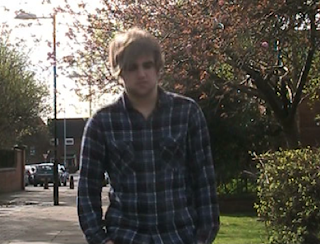

Monday, 4 April 2011
Mise-en-scene
We will use a ball for the first flashback to add realism to the clip, giving the impression that the two were once friends and had played football together previously.

We will use other props, like tomato ketchup for example to create the impression that the second character (the ghost) is dead. We will spread the tomato ketchup on the floor underneath his head.
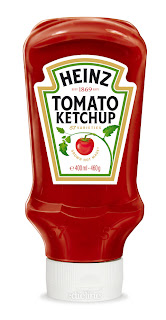
We have thought about the costumes both of the characters are going to be wearing. There are two seperate days involved in the opening sequence as well as the flashbacks so we need to have in mind that the main character needs to be wearing different clothing per scene; The second character (the ghost) only appears once, apart from the scene he appears to be dead in a flashback, which means whatever clothing he is wearing don't matter.
He should be wearing casual clothes, like jeans and a shirt for example because the target audience can then relate to the character as they are young adult males and male teenagers. He should have a hint of the "emo" look to show his character is emotional and depressed.
The second character should wear dark clothing, perhaps a hood to connote darkness and help to reveal what type of character he is.
Friday, 1 April 2011
Analysis of the opening of Shutter Island
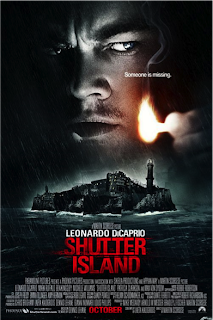
Shutter Island is a Psychological thriller about a police detective, who investigates the suspicious happenings in a mysterious island, and then the story takes a huge twist and we uncover that this police detective was mentally disturbed and had imagined the whole investigation in his mind. I would like my film opening to take certain aspects of this, and then change it to something that will be well suited and relatable to my 15-30 male target audience.
In the opening of Shutter Island the audience firstly sees an interesting visual image of a large boat coming forward through a thick fog. The creepy boat like music enhances the suspense and tension in the opening. This is followed by the audience seeing a character which is assumed to be the protagonist of the film in a ship’s toilet throwing up. The eerie, misty atmosphere from the low key lighting creates a sense of mystery for the audience. As the scene continues there are various long establishing shots of the ship and the island that the ship is travelling to, to show the audience the surroundings and inform them more details of the storyline, but still protecting the enigma in the story. Later in the scene there is a brief flashback which is shown with a quick cut into a contrasting lighting with an unknown female character.
All these aspects will be very interesting to use in my own film opening, such as the first interesting scenary/establishing shot, flashbacks, creepy music and the use of various lighting.
The screenshot above is a flashback and the screenshot above this is present time. The difference in lighting is very important as it helps the audience to distinguish between the two time periods. This can also show the different emotional atmosphere. The present time is quite dark which connotes a dark mood, where as the flashbacks suggest it is a happier time in the flashback because the lighting is brighter.
Tuesday, 15 March 2011
Pictures of locations we will use
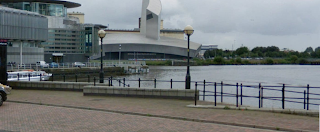 This location is situated in Salford Quays. This location can look eerie when it is quite dark, and can also juxtaposition the strange happenings and the genre of the film as it looks so beautiful and pleasant when the sun is shining on it and the water is glistening. We also thought this could be aesthetically pleasing and therefore would be a good shot to use for the titles.
This location is situated in Salford Quays. This location can look eerie when it is quite dark, and can also juxtaposition the strange happenings and the genre of the film as it looks so beautiful and pleasant when the sun is shining on it and the water is glistening. We also thought this could be aesthetically pleasing and therefore would be a good shot to use for the titles.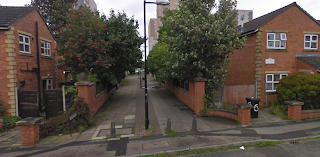 This alleyway is a typical normal area which an audience can easily relate to. However the scene is set in an alleyway which connotes a sense of a forbidden and fearful unknown in an normality which the audience will also relate to.
This alleyway is a typical normal area which an audience can easily relate to. However the scene is set in an alleyway which connotes a sense of a forbidden and fearful unknown in an normality which the audience will also relate to.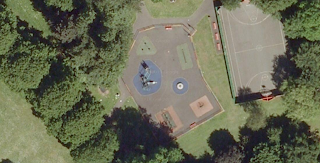 This park is perfect for our film, the swing scene will work really well as the swings are in the corner of the park, out of the way of any other people in the park. The paths leading to the park and the trees around it are perfect for the entrance of the main character.
This park is perfect for our film, the swing scene will work really well as the swings are in the corner of the park, out of the way of any other people in the park. The paths leading to the park and the trees around it are perfect for the entrance of the main character.
Wednesday, 2 March 2011
Shot List
- credit
1- long establishing shot of main character and location
2- handheld point of view shot
3- flashback- panning, long shot of the two friends walking to sit down by the water
4- longshot of friends sitting down by water
5- midshot high angle of second character on the floor dead
6- worms eye view close up of dead second characters face
7- extreme close up of main character's eye.
8- establishing long shot of main character entering the alleyway
9- tracking midshot (handheld) of main character from behind
10- high angle midshot of shadows
11- worms eye view, close up shot of shoe in puddle
12- midshot of main character looking at puddle
13- high angle point of view shot looking at shadow
14- midshot of main character looking around
15- point of view shot (handheld) at CCTV
16- midshot of main character looking around
17- high angle longshot (CCTV)
- credit
18- high angle extreme longshot of main character walking up path to park
19- high angle longshot, side view of main character walking up to path
20- longshot of main character entering gate
21- close up of main characters hand opening the gate
22- midshot of main character entering gate
23- longshot of main character walking to swing
24- midshot of matt on swing from behind
25- midshot of main character on swing from a side view
26-midshot of main character on swing from behind
27- midshot of main character on swing from a side view
- credit
28- midshot of main character on swing from behind
- credit
Tuesday, 1 March 2011
Initial thoughts on main task
We have decided that our main characters will be Matt Moran and Rapheal Jims, our first thoughts are that Matt's character will be followed by what appears to be a ghost and could be a hallucination of Rapheal's character , this is common in psychological thrillers like in Black Swan where she appears to be deluded and has several hallucinations.
In Black Swan the main character begins to feel very paranoid about different things which shows she is mentally ill. We would like to try and portray this in our film through the main character (Matt's character) through him believing that he is being followed.
Sunday, 27 February 2011
Quick overview of filming work
Our preliminary task helped us gain many skills which we may now apply to our main task. Getting experience using the equipment was especially important as some of us found them difficult to use at first, by the end of our preliminary we became much more adept with the equipment and gained many skills such as setting the camera up on the tripod, and using the tripod effectively in panning shots. We also learned how to operate the camera well, for example using the zoom feature. Learning how to switch to viewing mode so that we could look over the clips we had shot was also very useful, as it allowed us to check we had filmed them correctly.
We made some mistakes in filming the preliminary which helped us to know what to do and what not to do when filming the main task. For example, we realised that sometimes the clips we shot started too suddenly, we realised that it’s better to film more than is necessary, as the unnecessary parts can then be deleted during editing if not needed anyway. To do this we waited a few seconds after starting the recording on the camera before we started acting, the seconds at the beginning can then be deleted if not needed later on in editing.
To some of our group, the editing software was new and alien, and therefore difficult to use, but after completing our preliminary we became more efficient at using it. We learned how to cut clips to the desired length before inserting into the timeline, how to organise clips into a sequence, how to delete sound if not needed, and much more. We struggled at first in achieving smooth continuity editing, the clips had to have smooth transitions and look continuous, without jump cuts, however after a few attempts we soon got better at it.
During planning for the preliminary, we originally made a shot list of each of the different shots we were to use during the preliminary. Upon beginning our filming however we revised these and made a few changes, as we realised some of the shots would be difficult to achieve and would not fit in the sequence well, or would be too long. Therefore, we made some of the shots more simple and short in order to fit the 30-second time duration, even with the tweaks however we still went over the time limit, to around a minute. We therefore misjudged the length of time the clips would take, and will try to do this better in the main task.
We were, however, pleased with some aspects of our preliminary. The conversation-scene for example, in which we filmed the conversation between the two characters, went well. We managed to get a variety of shots such as over-the-shoulder shots and 2-shots. We also managed to use shot-reverse-shot and the 180 degree rule efficiently. One difficulty we faced in this scene however was in the acting, at first we tried to improvise the dialogue in the conversation. This however did not work well as the actors (Rapheal and Laura) found it difficult. We therefore instead wrote a script which we used.
To ensure we kept to the 180-degree rule we made sure that we kept shots in the correct perspective, by keeping to one side of the camera, if we would not have done this correctly it would have been confusing and disorientating for the viewer.
Wednesday, 16 February 2011
We filmed a variety of shots from different angles so as to have a wide range of shots to choose from during the editing stage of our project, the majority of these shots were discarded so as to save time.
We planned to begin our scene with an establishing shot in the form of an ariel shot of the college, so as to set the scene, however due to limited time we later discarded this in the editing process.
The first shot we chose to use in our clip was a static mid-shot of the main character, the shot was framed by the college gates, this also works to show where the scene is set, the character is seen holding a mobile phone, this shows the character is in a conversation, he is also wearing a bag which adds to the image of him being a college student.
This is followed by a match-cut of a close-up of the characters feet; this connects the clips together seamlessly, and shows that distance has been travelled, one negative about this shot is that the camera was placed on an angle and therefore the shot is tilted.
The next shot is a high-angle long-shot of the character continuing to walk toward the college, the hand-held effect is used to add the feeling that the character is being watched.
Another medium shot is then used in which the character walks toward the camera, in which dialogue is used to show that the character is looking for someone, this is followed by a shot of the character walking away from the camera and into the college doors.
More continuity editing is used to show the character passing through the college and into the canteen, such as a high angle shot filmed from the top of the stairs.
The next set of clips focus on the conversation between the two characters, we use the 180 degree rule throughout the clip so as to avoid distorting the perspective of the viewer, shot-reverse shot is used, aswell as over-the-shoulder shots and a 2-shot showing both characters. The scene ends with a final close-up of the main characters face, used to show the emotion on his face following the slap.
We filmed some really good shots and the film as a whole seems to flow well. However the sound sometimes jumps between shots and some of the conversation does not flow properly while switching between different shots. The acting became a problem when looking at the different clips we filmed. When putting them together we found that one of the characters faces jumped from being happy to angry with a straight face which looks quite odd and disturbs the flow of the preliminary.
We have learnt quite a lot through filming and editing the preliminary, which has helped us to see where we could potentially go wrong, and what we can include when filming the main task as well as editing too.
Monday, 14 February 2011
Research into thrillers
Panic Room
The opening scene of the movie “panic room” begins with a sequence of establishing long shots showing the buildings in the area, this sets the scene for the film and gives an idea of the kind of area that it is set in.
This scene also has a score which is used as a sound bridge to link all of the clips together. The score creates a feeling of fear which sets the theme for the rest of the movie.
This is followed by a long shot of a field in which we can see the use of jump shots to show the passage of time, this is an example of elliptical editing, this is unusual and helps to further hint at the theme of the movie.
Dialogue acts as a sound bridge linking this clip to the next, in which we see two women walking through a busy street; a panning shot is used to reveal the women.
Silence of the Lambs
In the opening sequence of silence of the lambs, the first shot is an establishing shot, which shows the location to be a foggy forest area; this has connotations of eeriness, and hints at the genre of the film.
The opening shot tilted down towards the floor, showing the main female protagonist running through an assault course, this shows her to be juxtaposed to the stereotype of women being weak. The scene contains a number of shots such as a close up of her feet whilst running, this adds variety to the clip and makes it more interesting.

One example of a shot during this scene is used to show the woman climbing the obstacle in the assault course, a 180 degree panning shot around the woman, this stops the viewer from becoming disorientated as it keeps it in perspective, it also shows a low angle of the woman on top of the obstacle, which suggests her physical power and breaks another stereotype.
Another example of effective camerawork is during the scene in which the panning shot is used to show the signs depicting words such as “pain” and “misery”, this creates suspense to see what the next word is going to be.
Inside the building, during the scene in the elevator, a medium shot is used to show the woman in the middle of a group of men, her size is shown to be small when compared to the tall men surrounding her, which connotes weakness, the men are also all in uniform whereas she’s wearing gym wear, which shows her as an individual.
Sound is also used to create an atmosphere of suspense, as throughout the clip tense incidental music is used, this hints at the genre of the film and also acts as a sound bridge linking different clips.
Welcome to our blog!
In order to prepare ourselves for our main task, we start with a preliminary task, which involved filming and editing a short sequence which involves a character walking, opening a door, and having a seated conversation with another, in which we demonstrate the 180 degree rule. The sequence was specified to involve dialogue, atleast 10 different camera shots; one of which should be a shot-reverse-shot, and match cuts. The preliminary task allows us to have practice using the camera equipment and getting different shots before going on to film our main task – Filming and editing the two-minute opening of a film.
























